Equipment
TrackMan 4 will have Impact Location feedback (2018 PGA Show Day 1)
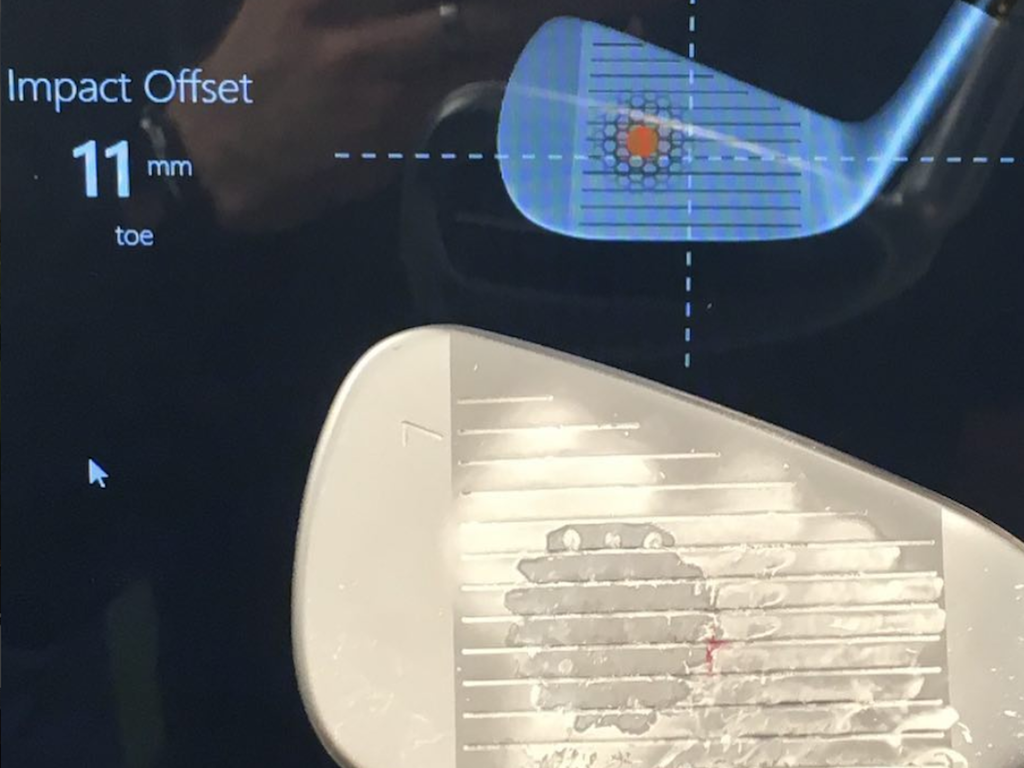
TrackMan users will now be able to get feedback on where they hit the ball on the face… finally!
As early as April 1, according to TrackMan, its TrackMan 4 will have the capability to provide feedback on impact location using its optically enhanced radar tracking system. Basically, the TrackMan 4 will use a combination of the radar system and the camera that’s on the system to get feedback on club-to-ball impact.
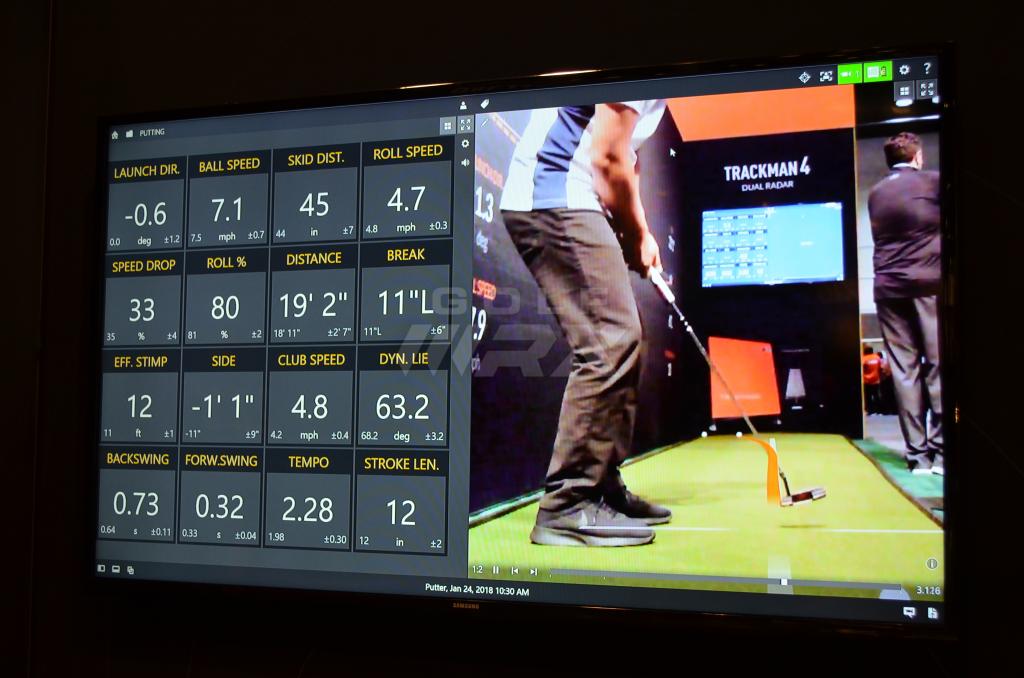
Actually, as TrackMan explained, its TrackMan 4 has been using the optically enhanced radar system in its putting analysis software that released in mid-December. See that orange line in the photo above? That line is the product of TrackMan using its radar and camera to provide feedback.

Except now, users will get what they’ve wanted from TrackMan for awhile; feedback on face impact on full swings, including impact height, impact offset, dynamic lie, and an orange dot that estimates where impact occurred.
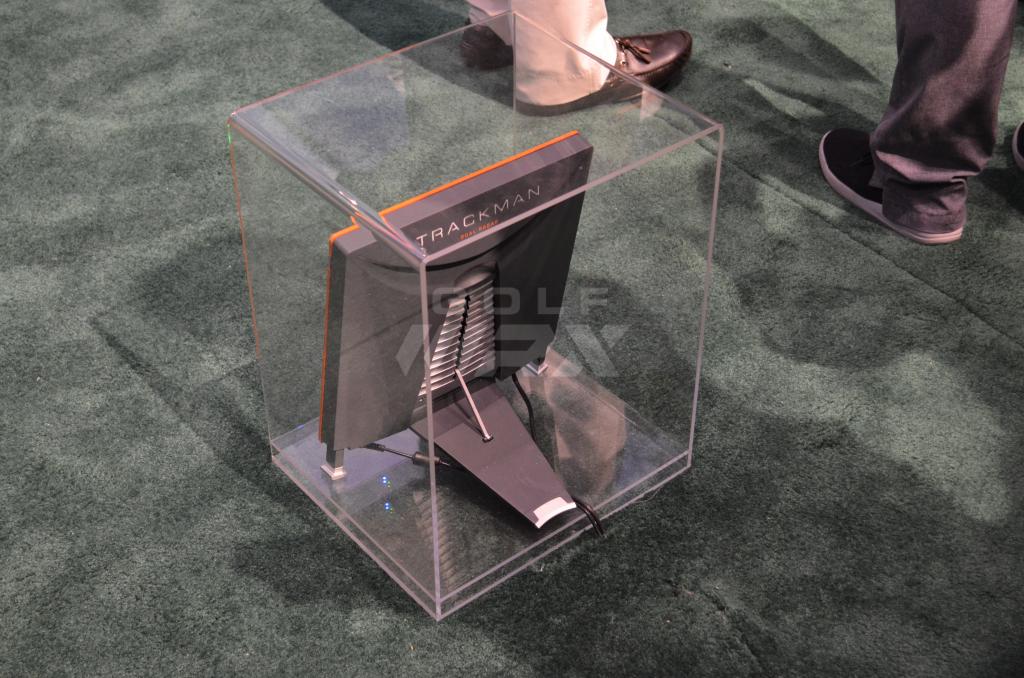
In order to use the impact location capability, TrackMan 4 owners will need to order a subscription, which costs $1000 per year. Or, for buyers who purchase the TrackMan 4 after the capability is released, there will be no subscription necessary, according to the company.
See all of our photos from the 2018 PGA Show here!
- LIKE44
- LEGIT1
- WOW1
- LOL3
- IDHT2
- FLOP2
- OB1
- SHANK14
Whats in the Bag
Kris Kim WITB 2024 (May)

- Kris Kim what’s in the bag accurate as of the CJ Cup Byron Nelson. More photos from the event here.
Driver: TaylorMade Qi10 (9 degrees @7)
Shaft: Mitsubishi Tensei 1K White 60 TX
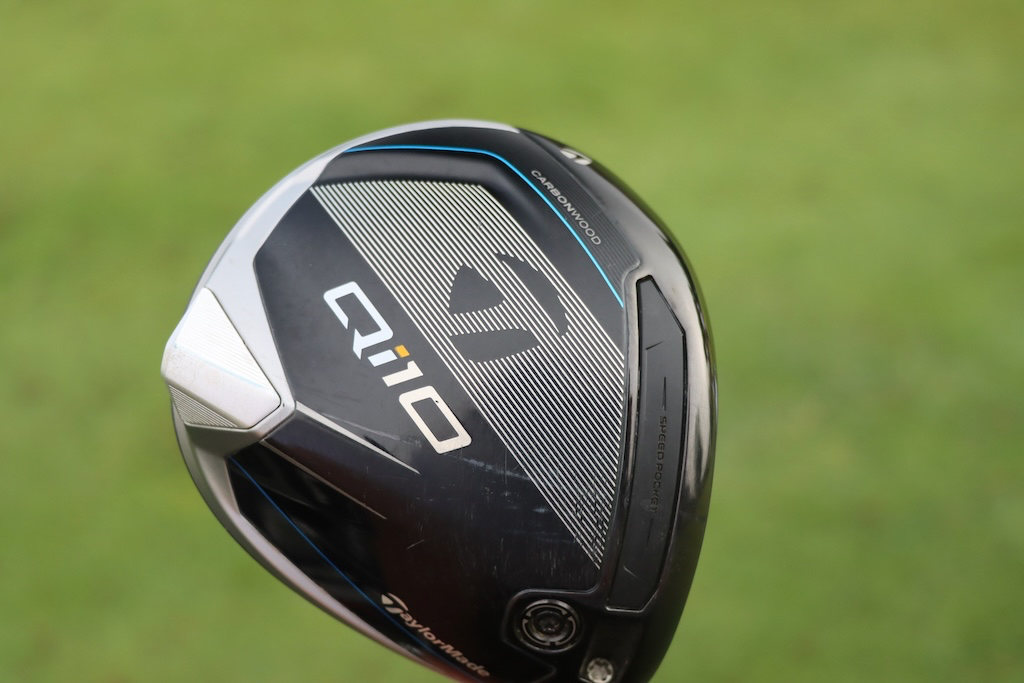

3-wood: TaylorMade Qi10 Tour (15 degrees @13.5)
Shaft: Mitsubishi Diamana WB 73 TX
Irons: TaylorMade P770 (2, 4), TaylorMade P7MB (5-PW)
Shafts: Mitsubishi Tensei 1K White 80 TX (2), Nippon N.S. Pro Modus3 Tour 120 X
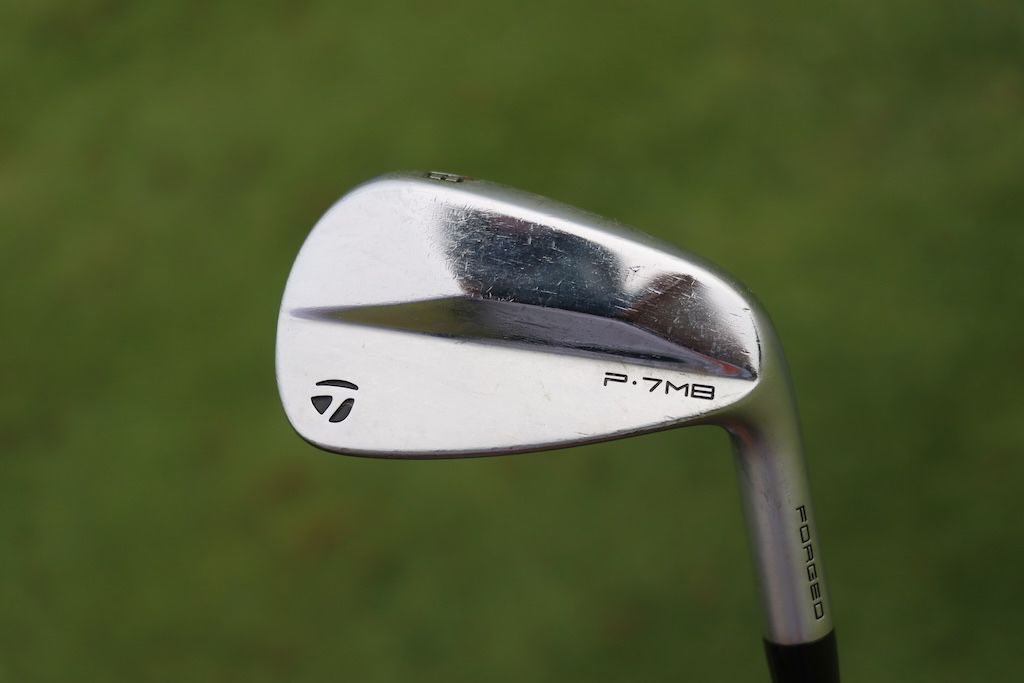

Wedges: TaylorMade MG4 (50-09SB, 56-12SB, 60-11TW)
Shafts: Nippon N.S. Pro Modus3 WV 125
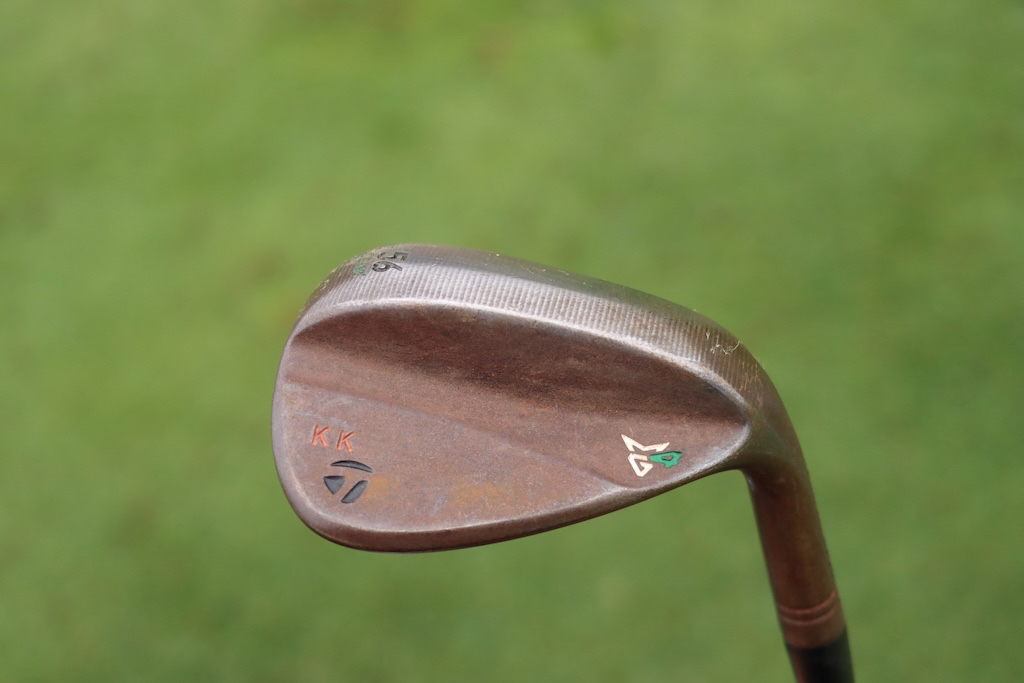

Putter: TaylorMade Spider Tour
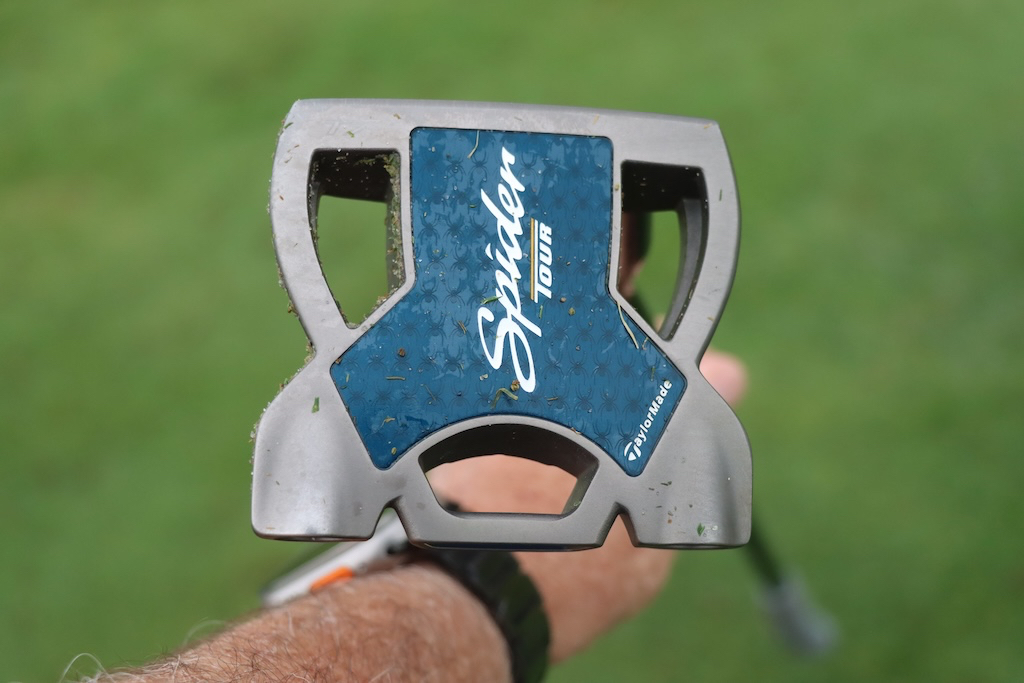
Grips: Golf Pride Tour Velvet Cord
Check out more in-hand photos of Kris Kim’s equipment here.
View this post on Instagram
- LIKE0
- LEGIT0
- WOW0
- LOL0
- IDHT0
- FLOP0
- OB0
- SHANK0
Equipment
Welcome to the family: TaylorMade launches PUDI and PDHY utility irons
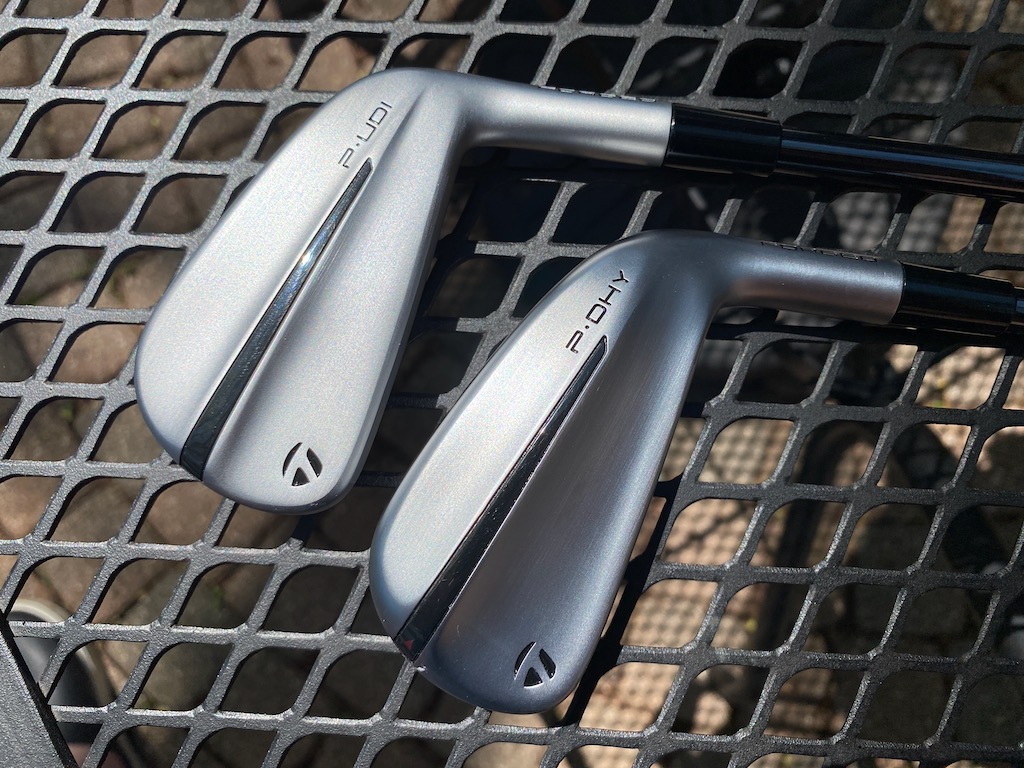
TaylorMade is continuing its UDI/DHY series with the successor to the Stealth UDI and DHY utility irons: PUDI and PDHY (which the company styles as P·UDI and P·DHY). TaylorMade is folding the designs in with its P Series of irons.
TaylorMade outlined the process of developing its new utilities this way. The company started with the data on utility iron usage. Not surprisingly, better players — i.e. those who generate more clubhead speed and strike the ball more precisely — were found to gravitate toward the UDI model. DHY usage, however, covered a wider swath than the company might have expected with six-to-18 handicappers found to be bagging the club.
TaylorMade also found that the majority of golfers playing UDI or DHY utilities were playing P Series irons at the top of their iron configurations.
Can you see where this is going?
Matt Bovee, Director of Product Creation, Iron and Wedge at TaylorMade: “As we look to the future, beyond the tech and the design language, we are excited about repositioning our utility irons into the P·Series family. P·UDI is an easy pair for players that currently play P·Series product and P·DHY is an extremely forgiving option for players of all skill levels. It is a natural fit to give these players the performance in this category that they are looking for.”
View this post on Instagram
TaylorMade PUDI
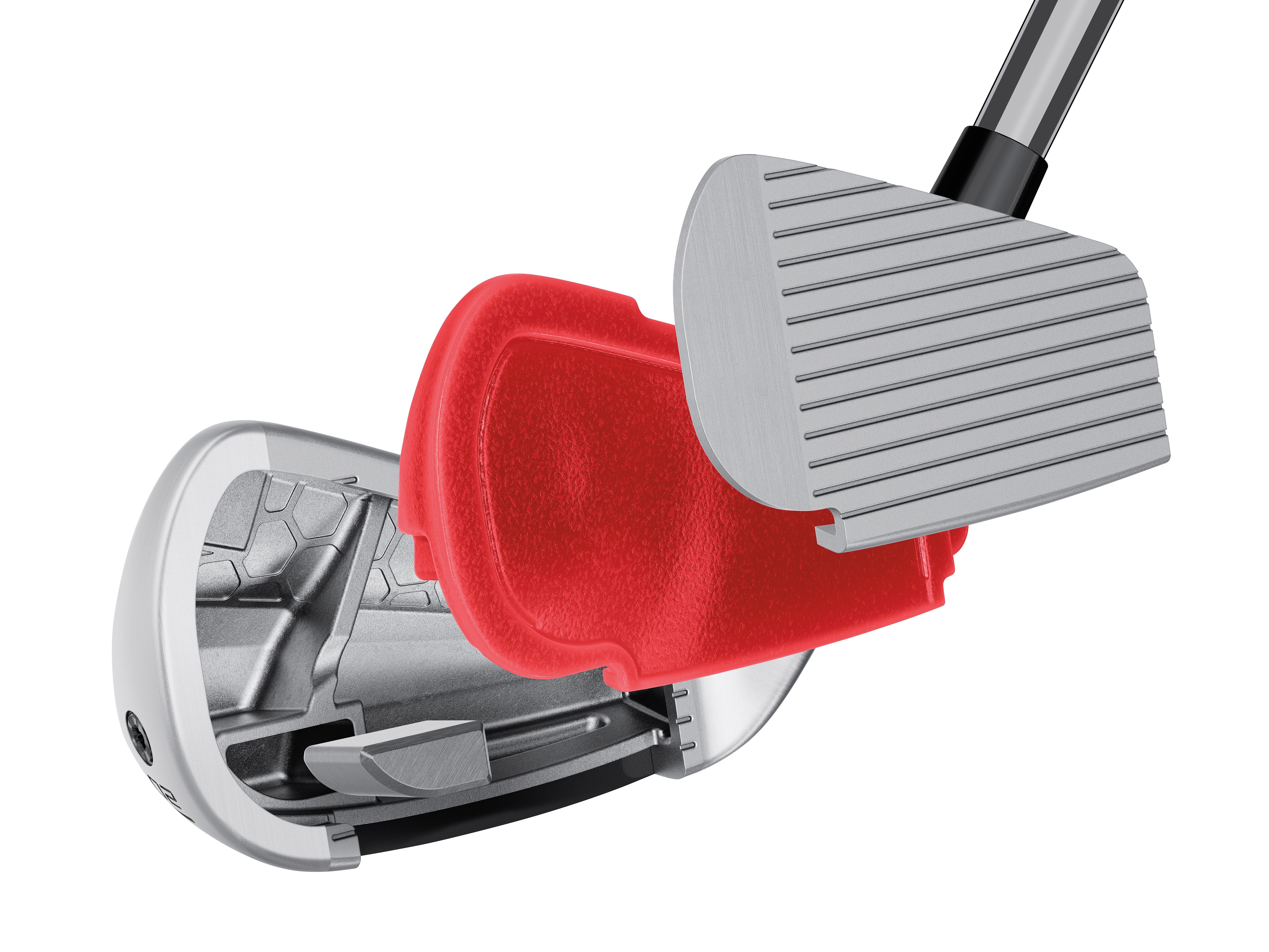
TaylorMade PUDI technology cutaway (via TaylorMade)
Crafted with tour player input, TaylorMade sought to develop a confidence-inspiring utility iron that blends with the rest of the P Series irons. Also of note: Interestingly, the PUDI has a more compact head than the P790.
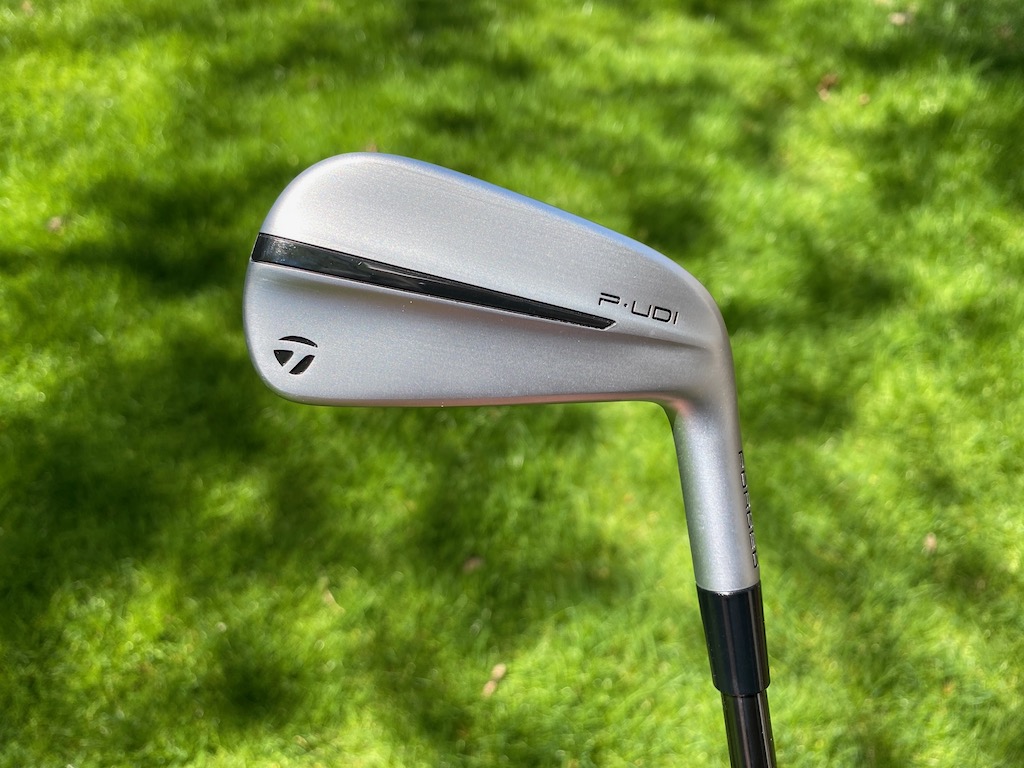
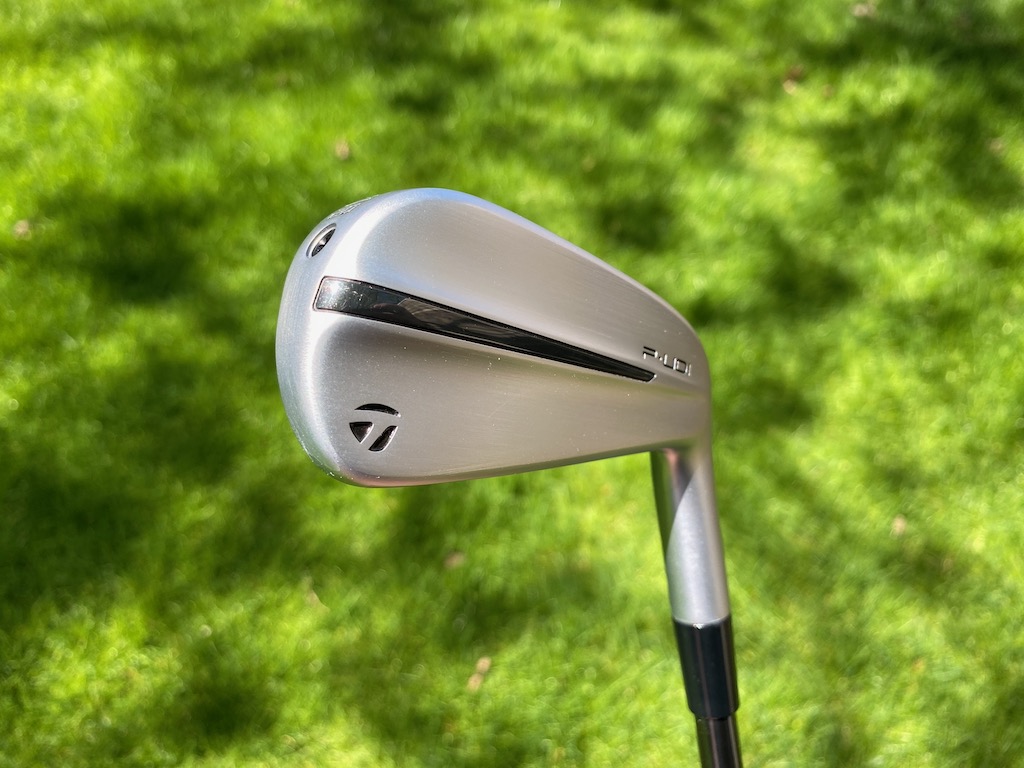
In comparison to past UDI products, the PUDI has a more traditional iron shape, slimmer toplines, and less offset with a little of the backbar visible at address.
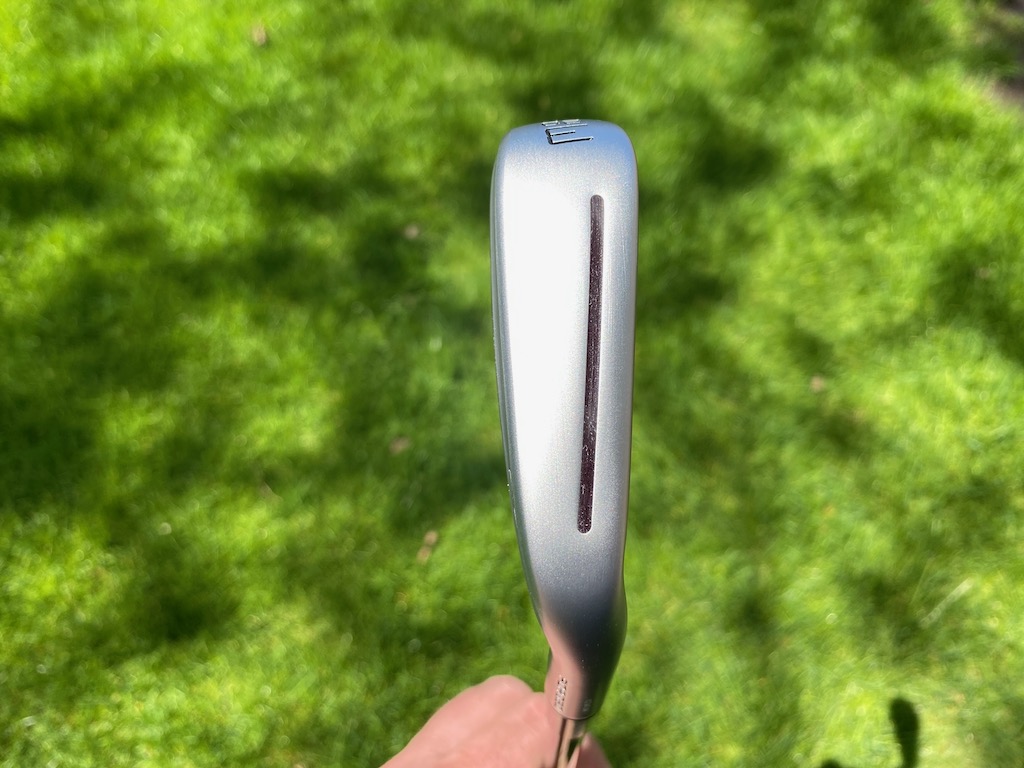

TaylorMade PDHY
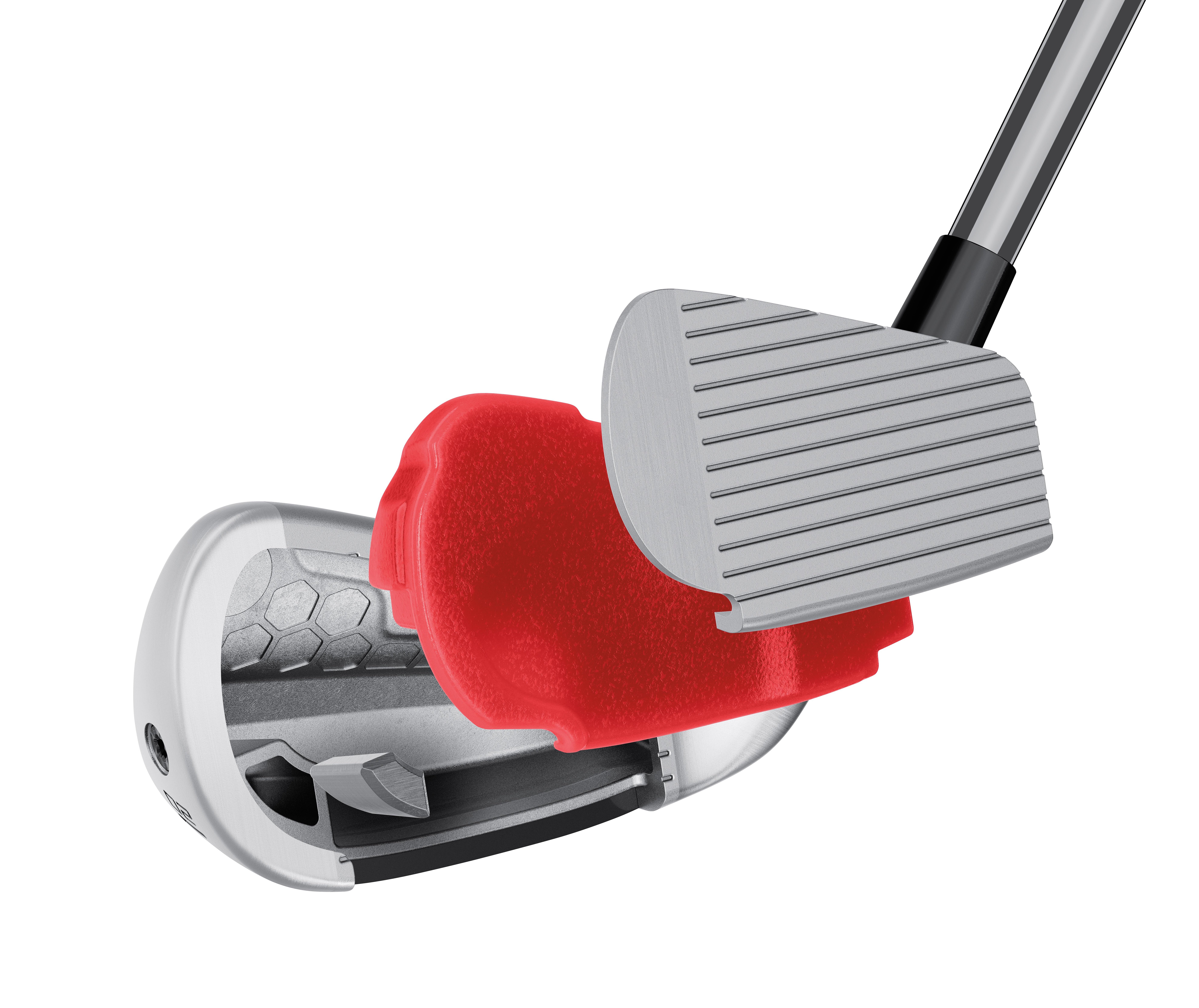
TaylorMade PDHY tech cutaway (via TaylorMade).
Larger in profile than the PUDI, the PDHY seeks to position center of gravity (CG) lower in the club for ease of launch. The toe height is larger and the profile is larger at address — roughly five millimeters longer than PUDI — the sole of the club is wider for improved forgiveness.
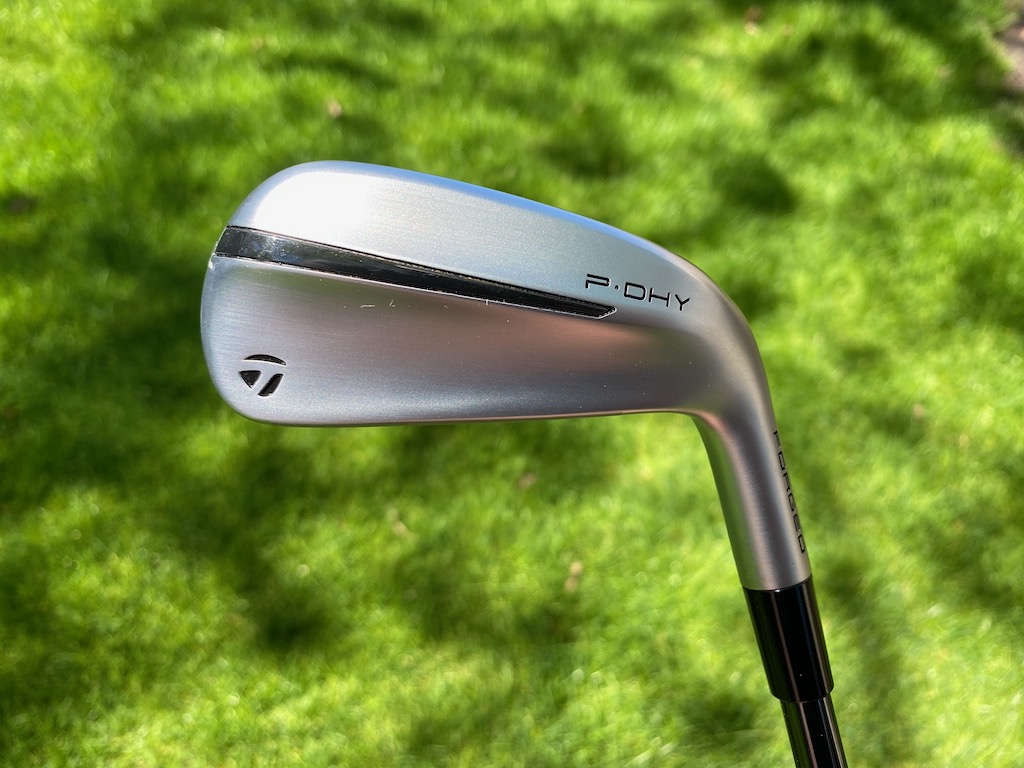



Club Junkie’s take
Golfers who feel like they are missing something at the top of the bag could find the PUDI or PDHY a great option. The look of the PUDI should fit the most discerning eye with a more compact look, less offset, and a thinner topline. If you want a little more confidence looking down the P-DHY will be slightly larger while still being a good-looking utility iron.
For being small packages both models pack a pretty good punch with fast ball speeds, even off-center. The feel is soft and you get a solid feel of the ball compressing off the face when you strike it well. Your ears are greeted with a nice heavy thud as the ball and club come together. The PDHY will launch a little higher for players who need it while the PUDI offers a more penetrating ball flight. Both utility irons could be the cure for an open spot in the top end of the bag.
PUDI, PDHY, or Rescue?
TaylorMade offers the following notes to assist golfers in filling out their bags:
- PUDI has mid-CG right behind the center face to create a more penetrating mid-to-low ball flight
- PDHY has a lower center of gravity to produce an easier-to-launch mid-to-high ball flight.
- Both PUDI and PDHY are lower-flying than the company’s hybrid/Rescue clubs.
- PUDI is more forgiving than P790.
- PDHY is the most forgiving iron in the entire TaylorMade iron family
Pricing, specs, and availability
Price: $249.99
At retail: Now
Stock shafts: UST Mamiya’s Recoil DART (105 X, 90 S and 75 R – only in PDHY)
Stock grip: Golf Pride’s ZGrip (black/grey)
PUDI lofts: 2-17°, 3-20°, 4-22° in both left and right-handed
PDHY lofts: 2-18°, 3-20° and 4-22° in both left and right-handed
- LIKE6
- LEGIT2
- WOW0
- LOL0
- IDHT0
- FLOP0
- OB0
- SHANK0
Equipment
Coolest thing for sale in the GolfWRX Classifieds (5/3/24): Scotty Cameron Champions Choice 2.5+ putter

At GolfWRX, we are a community of like-minded individuals that all experience and express our enjoyment of the game in many ways.
It’s that sense of community that drives day-to-day interactions in the forums on topics that range from best driver to what marker you use to mark your ball. It even allows us to share another thing we all love – buying and selling equipment.
Currently, in our GolfWRX buy/sell/trade (BST) forum, there is a listing for a Scotty Cameron Champions Choice 2.5+ putter
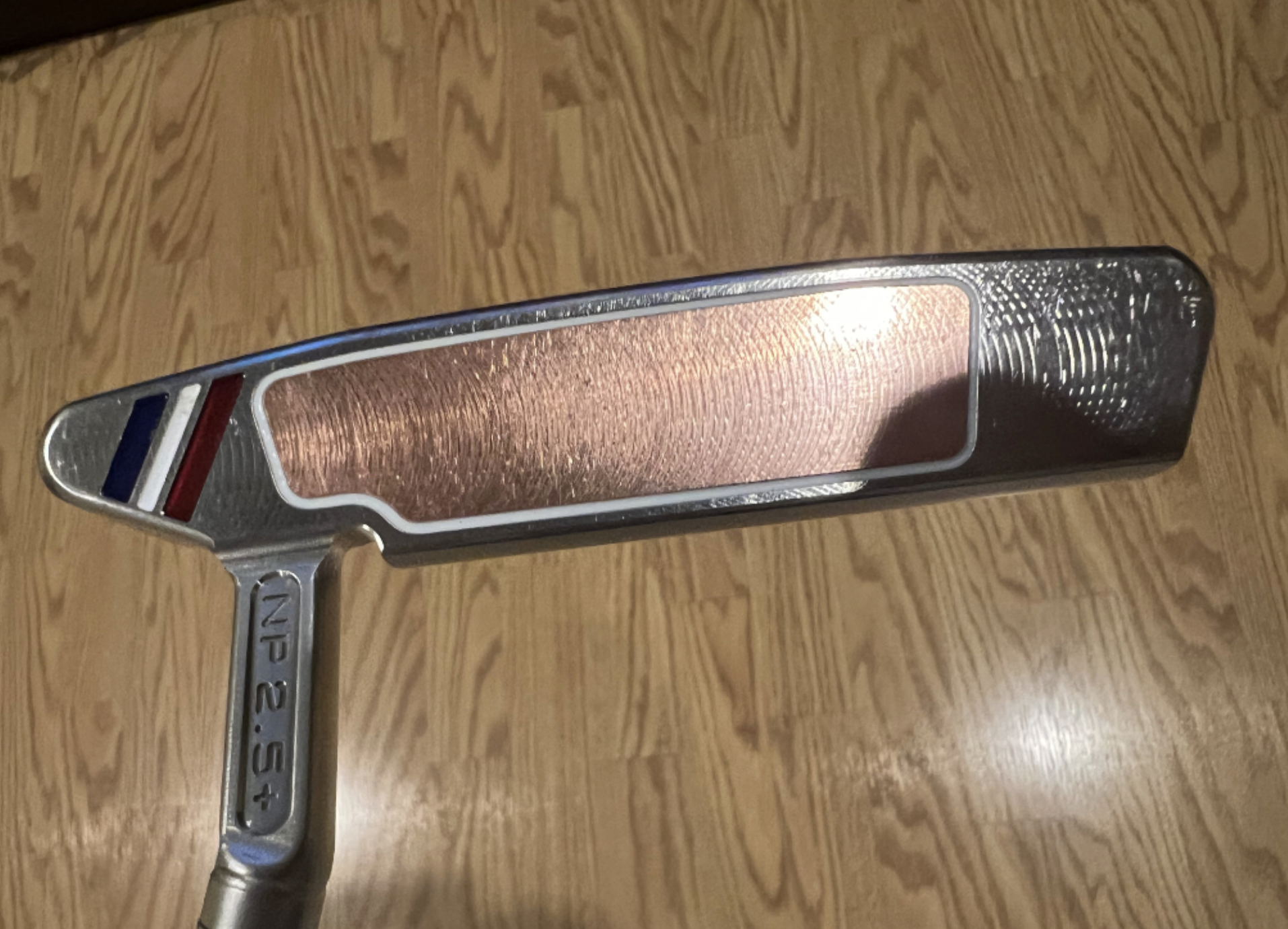
From the seller: (@wwcl): “Has been gamed as pics show. 33.5 includes original h/c and grip. $575 includes shipping and PP fees.”
To check out the full listing in our BST forum, head through the link: Scotty Cameron Champions Choice 2.5+ putter
This is the most impressive current listing from the GolfWRX BST, and if you are curious about the rules to participate in the BST Forum you can check them out here: GolfWRX BST Rules
- LIKE1
- LEGIT1
- WOW0
- LOL0
- IDHT0
- FLOP0
- OB0
- SHANK0
-

 19th Hole2 weeks ago
19th Hole2 weeks agoJustin Thomas on the equipment choice of Scottie Scheffler that he thinks is ‘weird’
-

 19th Hole2 weeks ago
19th Hole2 weeks ago‘Absolutely crazy’ – Major champ lays into Patrick Cantlay over his decision on final hole of RBC Heritage
-

 19th Hole3 weeks ago
19th Hole3 weeks agoTwo star names reportedly blanked Jon Rahm all week at the Masters
-

 19th Hole2 weeks ago
19th Hole2 weeks agoReport: LIV Golf identifies latest star name they hope to sign to breakaway tour
-

 19th Hole3 weeks ago
19th Hole3 weeks agoNeal Shipley presser ends in awkward fashion after reporter claims Tiger handed him note on 8th fairway
-

 19th Hole2 weeks ago
19th Hole2 weeks agoBrandel Chamblee has ‘no doubt’ who started the McIlroy/LIV rumor and why
-

 19th Hole1 week ago
19th Hole1 week agoLET pro gives detailed financial breakdown of first week on tour…and the net result may shock you
-

 Equipment2 weeks ago
Equipment2 weeks agoJason Day on his recent switch into Srixon ZX5 and ZX7 Mk II irons


















Francis
Jan 26, 2018 at 6:48 am
TrackMan measures ball until it lands or hits the net, indoors or outdoors. It also measures all club and impact data between waist high to waist high on follow through. Optical systems simply see about 1-1.5’ft of ball/club and then apply algorithms to predict ball flight. The comments to the contrary above are flat out incorrect.
To be clear, “measuring” and “calculating” are the same thing: both require a series of inputs that create an output. The difference between the two types of systems lies in sample rates (how many data points in specific period of time), measurement precision (consistency) and measurement accuracy (how close to actual value).
This is an easy test. Hit a ball full flight with a TM and any other products, and watch the ACTUAL landing point very carefully. This is the reason it is overwhelmingly used by EQMs, Tour players, colleges and coaches.
TM is a fantastic product, with no club making stickers needed to measure club data. The comments claiming the contrary are disingenuous at best.
LEOMODE
Jan 27, 2018 at 2:29 am
How would you respond to Trackman losing to GC series indoor? I know at least 5-6 hardly loyal GC users who would think Trackman is simply way inferior than GC series because of how the radar is made. I explain it to them in my test since they never had or tested side by side, but they are pretty firm on their mindset.
I agree on the part that if there is not enough space of at least 21ft (9ft from TM to ball, 12ft from ball to screen) and without a metallic sticker on a ball, TM would not output data (not entirely inaccurate, only except ball spin), since TM doesn’t show any data if its not confident. However in my testing indoor data was within tolerance with HMT data.
What would you say to a radar system indoor in general vs a camera system?
joey
Jan 25, 2018 at 7:32 pm
What do you mean by real time data? The quad measures everything. The only thing that is calculated is carry distance, peak and curvature. This is based on accurate measurements of ball speed, spin axis and launch angle. Pretty much everything that the TM does with club data is based upon ball data (which it only measures ball flight up to 170m, the rest is algorithm). Try and test a quad outside against a TM4 and look at the numbers. Either way, both are really good products in their own right, but my money is on the quad due to indoor/outdoor use and the fact that TM charges annual fees and fees for software upgrades.
Ollie
Jan 25, 2018 at 3:09 pm
But it doesn’t matter any more where you hit on the clubface because new clubs are so forgiving.
Twist Face driver technology, jello-filled hollow irons, amazing putter structures and face patterns, all provide the serious golfer with results that obviate the need for radar-optical determination of impact location.
TM, PXG, Scotty, have engineered-out the miss-hit errors in their technologically advanced club designs.
BP
Jan 25, 2018 at 10:49 pm
Ollie !!!
BDS
Jan 26, 2018 at 1:58 pm
I guess I need to buy the clubs that don’t care if I heel it, toe it, blade it or chunk it. Because if those clubs are out there I can’t wait to buy them and be a scratch golfer!
Frankie
Jan 25, 2018 at 11:28 am
Why pay $25k with a $1k yearly subscription for something that’s only calculating the club data and impact spot (TrackMan 4) when you can pay $18k one-time no subscription for something that actually measures the club data and impact spot (Foresight GC Quad)?
Eric
Jan 25, 2018 at 12:12 pm
bc GCQuad is camera based and does not provide real time ball data/club data, different purposes altogether.
CB
Jan 25, 2018 at 2:54 am
It’s still guessing where it hit. How does anything, or anybody, accurately spot where on the face it hits if it’s looking at it from the back of it? It’s like looking at somebody’s back of the head and imagining what they look like lol
the dude
Jan 25, 2018 at 8:51 am
good point…maybe im missing something that is illustrated
LEOMODE
Jan 27, 2018 at 2:37 am
That is what amazes me of Trackman calculating all these data without seeing it and STILL be within a tolerance limit of a camera system. This is just wonders.